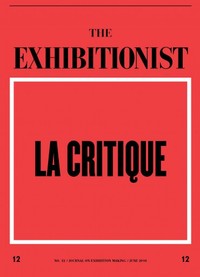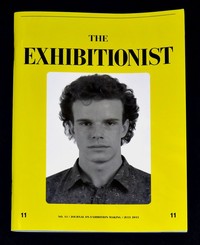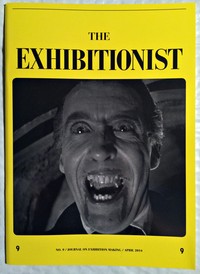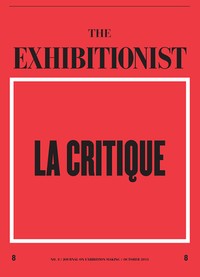The Exhibitionist i — October 2014, #10
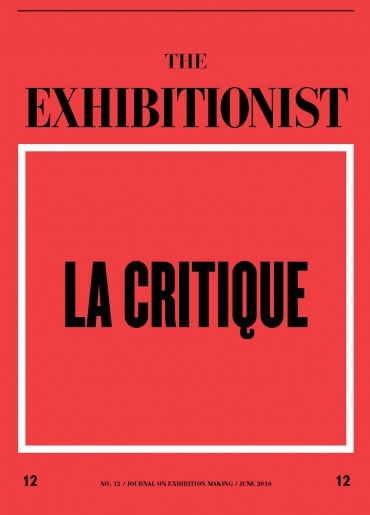
The Exhibitionist
Journal on exhibition making
(Extract)
Overture Jens Hoffmann, Julian Myers-Szupinska, and Lumi Tan
A half-century after the emergence of the curator in the contemporary sense, and 27 years after the founding of the first study of curatorship at École du Magasin in Grenoble, France, misgivings remain about the curatorial role. On the one hand, curators are faulted for being mere facilitators and cultural managers whose intrusion into the essential components of exhibition making—art, artists, publics, and counterpublics—is unnecessary, even unwelcome. (Our cover depicts Cindy Sherman at Artists Space in the 1970s, posing cheerfully as this sort of worker bee.) On the other, curators are accused of usurping artists’ rightful share of self-determination and interjecting a distracting performance of their own authorship into the happy and transparent relationship between art and people. These complaints cast curators as megalomaniacs or middlemen, lackeys or celebrities, exhibition makers or exhibitionists. Taken together, these anti-curatorial postures produce an odd double picture of a figure that in one gesture arrogates and abolishes their own position.
What do you think of this issue?
Sign up or Log in to join the discussion.
Recent activity
- 15 Apr, 2015 Added to pile by kaleigh_artefact
- 06 Apr, 2015 New cover uploaded by Mottobooks
- 06 Apr, 2015 Added to Magpile by Mottobooks

